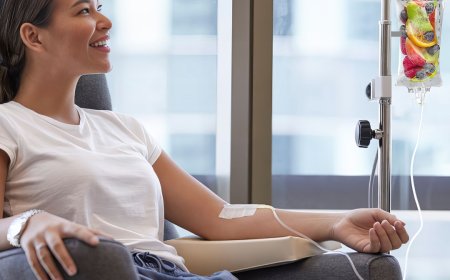Top 10 Omaha Spots for Street Photography
Top 10 Omaha Spots for Street Photography You Can Trust Omaha, Nebraska, is a city of quiet character, textured neighborhoods, and unassuming beauty. While it may not always appear on the global street photography radar, those who take the time to wander its streets discover a rich tapestry of human expression, architectural contrast, and candid moments waiting to be captured. But not every corner
Top 10 Omaha Spots for Street Photography You Can Trust
Omaha, Nebraska, is a city of quiet character, textured neighborhoods, and unassuming beauty. While it may not always appear on the global street photography radar, those who take the time to wander its streets discover a rich tapestry of human expression, architectural contrast, and candid moments waiting to be captured. But not every corner is equally welcoming, safe, or photogenic. In a world where street photographers often face uncertainty—about permission, safety, or whether a location truly offers compelling imagery—trust becomes the most valuable currency. This guide reveals the top 10 Omaha spots for street photography you can trust: places where the light is right, the people are authentic, and the atmosphere invites quiet observation without intrusion or risk.
Why Trust Matters
Street photography is more than technique—it’s a dialogue between the photographer and the world. It requires presence, patience, and the confidence to capture life as it unfolds. Yet, without trust, that dialogue becomes fraught. Trust here means more than personal safety; it encompasses legal clarity, cultural respect, and the assurance that the environment will yield meaningful imagery without forcing contrived scenes.
In Omaha, as in any mid-sized American city, perceptions of public space can vary widely. What feels like a bustling downtown street to one person may feel intimidating or unwelcoming to another. Some locations may be technically public but socially charged—places where photography can be misinterpreted, even if legal. Others may be visually stunning but lack the human element that gives street photography its soul.
Trusted street photography spots are those that consistently offer:
- Open, accessible public spaces with legal photography rights
- A mix of natural light and architectural interest
- Diverse, unposed human activity
- Low risk of confrontation or misunderstanding
- Consistent visual variety across seasons and times of day
This list has been curated through years of on-the-ground observation, local insight, and photographic experimentation. Each location has been visited repeatedly—morning, noon, and night—across seasons. Each has proven itself not just as a visually compelling location, but as a place where the photographer can work with confidence, dignity, and respect for the community.
Trust is not given—it’s earned through experience. These ten spots have earned it.
Top 10 Omaha Spots for Street Photography You Can Trust
1. Old Market District
The Old Market is Omaha’s most iconic urban neighborhood, a district of restored 19th-century brick warehouses now housing boutiques, galleries, and eateries. It’s a magnet for locals and tourists alike, making it a goldmine for candid street photography. The narrow, cobblestone alleys, wrought-iron balconies, and shifting light patterns between buildings create a cinematic atmosphere.
What makes this spot trustworthy? First, it’s a designated public pedestrian zone where photography is not only permitted but expected. Second, the constant flow of people—artists, musicians, diners, commuters—ensures dynamic, unscripted moments. Third, the architecture provides natural framing: doorways become vignettes, windows reflect hidden stories, and overhead strings of lights add texture to evening shots.
Best times to shoot: Late afternoon to dusk, when the golden hour bathes the brick facades in warmth. Weekends offer more street performers and lively crowds, while weekdays reveal quieter, more introspective moments—vendors arranging produce, elderly patrons sipping coffee, children chasing pigeons.
Avoid overtly commercial photography that disrupts business. Instead, focus on the interplay between people and place. A woman adjusting her scarf under a vintage awning. A man reading a newspaper on a bench while a dog sleeps at his feet. These are the images that endure.
2. Lewis and Clark Landing
Along the Missouri River, Lewis and Clark Landing offers sweeping views, open plazas, and a sense of tranquility rarely found in urban centers. This riverside park is a hub for joggers, cyclists, dog walkers, and families, making it ideal for capturing the rhythm of everyday life.
The landing’s long promenade, lined with benches, sculptures, and interpretive markers, provides clean lines and natural leading lines for composition. The river itself acts as a reflective surface, doubling the visual interest during sunrise or sunset. The contrast between the natural landscape and the occasional urban backdrop—distant bridges, silhouetted cranes—adds depth.
Photographers can work here for hours without drawing attention. The space is widely used and well-maintained, with clear signage confirming public access and photography rights. There’s little to no tension between residents and visitors. People here are relaxed, often unaware of the camera, making it one of the most ethical and rewarding locations in the city.
Pro tip: Use a telephoto lens to capture distant figures walking along the water’s edge. The soft haze over the river in early morning adds a dreamlike quality to black-and-white shots. Autumn brings vibrant foliage along the trails, turning the space into a painterly palette.
3. 16th and Dodge Street Intersection
At the heart of downtown Omaha, the intersection of 16th and Dodge is a microcosm of the city’s pulse. This is where the business district meets the cultural core. Office workers in suits, college students with backpacks, street vendors, and homeless individuals coexist in a complex, authentic dance.
What sets this spot apart is its raw honesty. Unlike curated districts, here you witness real life—unfiltered. The crosswalks become stages for fleeting expressions: a sigh, a smile, a hurried glance. The buildings surrounding the intersection—some modern glass towers, others century-old brick facades—create a visual dialogue between past and present.
Photographers here must be discreet and respectful. While the location is legally public, the socioeconomic diversity demands sensitivity. Avoid intrusive close-ups of individuals in distress. Instead, focus on the environment: the reflection of neon signs in puddles after rain, the way shadows stretch across the pavement at 5 p.m., the contrast between a businessman’s polished shoes and a street musician’s worn boots.
Best shot: A lone figure standing under an umbrella, waiting for the light to change, surrounded by the blur of motion. The scene is inherently cinematic, and the location is safe, well-lit, and frequently patrolled—making it one of the most reliable urban street photography zones in Omaha.
4. Benson Main Street
Benson is Omaha’s bohemian heartbeat. This neighborhood thrives on independent spirit, with vintage shops, record stores, tattoo parlors, and cafés lining its main drag. Benson Main Street is where generational traditions meet youthful rebellion—and where street photography feels less like documentation and more like participation.
The street’s eclectic mix of signage, murals, and storefronts provides endless compositional variety. The lighting here is forgiving—overhanging trees soften midday sun, while string lights and neon signs come alive at night. The crowd is diverse: artists sketching on benches, teenagers laughing outside the coffee shop, elderly couples browsing the bookstore.
Trust here stems from Benson’s cultural identity. Locals expect and even welcome photographers. Many recognize the value of visual storytelling and are open to being included in the narrative—sometimes even posing. But the best shots are still the candid ones: a man adjusting his hat before entering a record store, a woman reading on a stoop with her cat beside her, the reflection of a mural in a shop window.
Early evenings are ideal. The golden hour glows through the trees, casting long shadows across the sidewalk. Don’t overlook the alleyways between buildings—they’re filled with hidden textures, peeling paint, and unexpected details that tell stories without words.
5. Joslyn Art Museum Courtyard
Often overlooked by photographers seeking “edgy” urban scenes, the Joslyn Art Museum courtyard is a quiet sanctuary of elegance and stillness. Surrounded by neoclassical architecture, fountains, and manicured gardens, this space offers a different kind of street photography—one rooted in poise, silence, and composition.
While the museum itself has rules against flash photography indoors, the outdoor courtyard is fully open to the public and free to photograph. The marble pathways, sculpted hedges, and reflective pools create a stage for contemplative moments. Visitors here are often in a state of quiet reflection—reading, sketching, sitting alone on benches.
This is a place where light behaves like a painter’s brush. In the morning, soft light filters through the trees. At midday, sharp shadows carve geometric patterns on the ground. At dusk, the fountain glows under ambient lighting, turning water droplets into floating diamonds.
What makes this spot trustworthy? The atmosphere is inherently respectful. People are here to experience art, not to be photographed. This means subjects are less likely to react negatively. The space is also well-monitored, safe, and accessible to all. It’s ideal for photographers seeking to explore themes of solitude, beauty, and quiet dignity.
Use a wide aperture to blur the background and isolate your subject. A lone woman gazing at a sculpture. A child touching the edge of a fountain. These are images that linger long after the shutter closes.
6. The Durham Museum Plaza
Adjacent to the Durham Museum, this open-air plaza is a hidden gem for street photographers. The museum’s Art Deco façade provides a dramatic backdrop, while the plaza itself serves as a transitional zone between the historic district and the modern city.
Here, you’ll find a steady stream of visitors arriving for exhibits, school groups on field trips, and locals taking lunch breaks on the steps. The space is wide and uncluttered, allowing for full-body compositions and environmental storytelling. The brickwork, iron railings, and large windows offer rich textures and natural framing.
What elevates this location is its quiet authenticity. Unlike the bustling Old Market, this plaza doesn’t attract crowds for spectacle—it draws people for substance. The pace is slower. The interactions are genuine. A grandfather pointing out a statue to his granddaughter. A student sketching the building’s façade. A woman adjusting her coat before stepping inside.
Photography here feels unobtrusive. The museum’s presence lends an air of cultural legitimacy. There are no signs prohibiting photography, and the area is consistently well-lit and safe. For those interested in capturing the intersection of history and daily life, this is one of Omaha’s most reliable locations.
7. Miller Park
Located in the heart of North Omaha, Miller Park is a community anchor—a place where generations gather. The park features a large open field, a historic bandshell, walking paths, and a playground that buzzes with activity from dawn to dusk.
This is not a tourist destination. It’s a neighborhood heart. And that’s what makes it invaluable for street photography. Here, you’ll witness the real, unvarnished texture of Omaha’s African American and Latino communities: families picnicking, elders playing dominoes, teens shooting hoops, mothers pushing strollers under the shade of oaks.
The lighting here is dynamic. Morning light filters through the trees, casting dappled patterns on the grass. Afternoon sun highlights the vibrant colors of clothing, food carts, and banners. Evenings bring a golden glow as the bandshell becomes a silhouette against the fading sky.
Trust is earned here through patience and presence. Don’t arrive with a camera and snap quickly. Spend time. Sit on a bench. Smile. Let people see you’re not just passing through. Once trust is established, the moments become richer. A grandmother braiding her granddaughter’s hair. A boy holding a balloon too tight, afraid it might fly away. These are the images that carry weight.
Respect the culture. Avoid sensationalizing hardship. Focus on joy, resilience, and connection. Miller Park doesn’t need to be “fixed” in your lens—it needs to be seen, honestly and tenderly.
8. The Union Pacific Railroad Tracks (Near 24th and Lake)
For photographers drawn to industrial aesthetics and urban decay, the railroad tracks near 24th and Lake offer a gritty, atmospheric playground. This is not a park or a plaza—it’s a working rail corridor with abandoned warehouses, graffiti-covered walls, and the constant rumble of passing freight trains.
Photography here is legal as long as you remain on public sidewalks and do not trespass on active rail property. The area is rarely crowded, which means you can work slowly and deliberately. The textures are extraordinary: rusted metal, cracked concrete, peeling paint, and the occasional burst of street art.
The light here is dramatic. Early morning fog rolls in from the river, wrapping the tracks in mystery. Late afternoon sun slants through the gaps between warehouses, creating stark contrasts. At night, the occasional flicker of a streetlamp or the glow of a distant window adds cinematic tension.
What makes this spot trustworthy? It’s predictable. The rail lines are clearly marked. The sidewalks are public. The community knows photographers come here for the aesthetics, not for intrusion. While the area has a reputation for being “edgy,” it’s not dangerous during daylight hours. Many local artists and photographers use this space regularly.
Use a tripod for long exposures during train passages. Capture the motion blur of a freight train against a static figure—someone waiting for a bus, a man checking his watch, a dog sniffing the tracks. These images tell stories of time, movement, and endurance.
9. Fontenelle Forest Nature Trail
For those seeking street photography beyond the urban grid, Fontenelle Forest offers a rare blend of nature and human presence. Located just north of Omaha, this 300-acre nature preserve features winding trails, wooden bridges, and open meadows where locals walk, jog, and birdwatch.
Here, street photography transforms into environmental portraiture. The subjects are not in suits or streetwear—they’re in hiking boots, sweatpants, and rain jackets. The backdrop is not brick and steel, but moss, bark, and sky. The mood is contemplative, intimate, and deeply human.
Trust is inherent in this space. People come here to disconnect. They rarely notice the camera. And when they do, they rarely mind. The forest’s natural beauty invites quiet observation. A woman pausing to take a photo of a bird. A father lifting his child onto a log. Two friends sharing a thermos of coffee on a bench.
The lighting is soft and diffused, perfect for natural color and texture. Early mornings are magical—mist rises from the creek, dew clings to spiderwebs, and the air is still. Late afternoons offer warm, golden tones that turn the forest into a cathedral of light.
Use a telephoto lens to capture distant figures without intrusion. The trails are wide enough to maintain distance while still composing powerful environmental shots. This is street photography stripped bare—people in their natural habitat, moving through the world with quiet purpose.
10. The Omaha Public Library Plaza
At the corner of 15th and Harney, the Omaha Public Library’s modernist architecture and open plaza form a quiet urban stage. This is a place of stillness, learning, and solitude—where people come not for spectacle, but for sanctuary.
The plaza features wide steps, low stone walls, and a central fountain. It’s a natural gathering point for students, writers, and those seeking quiet. You’ll see people reading on benches, typing on laptops, sketching in notebooks, or simply staring into the distance.
What makes this spot trustworthy? The library is a civic institution. Its grounds are designed for public use. Photography is not only allowed—it’s encouraged as part of the cultural experience. The space is clean, well-lit, and monitored. There’s no tension, no suspicion, no risk.
The architecture itself is a subject: clean lines, glass reflections, geometric shadows. But the real magic lies in the people. A teenager hunched over a book, lost in another world. An elderly man adjusting his glasses before turning a page. A woman laughing quietly into her phone, the fountain bubbling behind her.
Use natural light to your advantage. The glass façade reflects the sky, creating soft, even illumination. Shoot from the steps to capture subjects against the open sky. Or use the fountain’s ripples as a foreground element to add depth.
This is street photography at its most humane. No drama. No spectacle. Just quiet moments of human thought, suspended in time.
Comparison Table
| Location | Best Time to Shoot | Lighting Quality | Human Activity Level | Safety & Trust Rating | Photographic Style Best Suited |
|---|---|---|---|---|---|
| Old Market District | 4 PM – 8 PM | Golden hour, warm tones, high contrast | High | Excellent | Candid urban, architectural detail |
| Lewis and Clark Landing | 6 AM – 9 AM, 6 PM – 8 PM | Soft, reflective, atmospheric | Medium | Excellent | Environmental, long exposure, silhouette |
| 16th and Dodge Street | 5 PM – 7 PM | Harsh midday, soft evening | Very High | Excellent | Documentary, social contrast, motion blur |
| Benson Main Street | 5 PM – 9 PM | Warm, diffused, colorful | High | Excellent | Colorful candid, street culture, textures |
| Joslyn Art Museum Courtyard | 8 AM – 11 AM, 4 PM – 6 PM | Soft, elegant, directional | Low to Medium | Excellent | Minimalist, contemplative, portraiture |
| The Durham Museum Plaza | 10 AM – 3 PM | Bright, even, architectural | Medium | Excellent | Environmental storytelling, historical context |
| Miller Park | 4 PM – 7 PM | Golden, dappled, warm | High | Very Good | Community, cultural, emotional depth |
| Union Pacific Railroad Tracks | 7 AM – 10 AM, 7 PM – 9 PM | High contrast, moody, dramatic | Low | Good | Industrial, texture, noir, motion |
| Fontenelle Forest Nature Trail | 6 AM – 9 AM, 5 PM – 7 PM | Soft, diffused, natural | Low | Excellent | Nature portraiture, environmental, quiet moments |
| Omaha Public Library Plaza | 10 AM – 4 PM | Even, natural, glass-reflected | Low to Medium | Excellent | Minimalist, introspective, documentary |
FAQs
Is it legal to take street photos in Omaha?
Yes. In Omaha, as in all public spaces in the United States, you have the legal right to photograph people and scenes in public areas where there is no reasonable expectation of privacy. This includes sidewalks, parks, plazas, and streets. However, if you are photographing on private property (even if open to the public, like a mall), the property owner may impose restrictions. The locations listed here are all public or quasi-public spaces where photography is widely accepted and unregulated.
Should I ask for permission before photographing someone?
Legally, you do not need permission to photograph strangers in public. Ethically, it depends on context. In places like the Old Market or Benson, where photography is common, it’s often unnecessary. In more intimate or vulnerable settings—like Miller Park or near individuals who appear distressed—it’s respectful to be discreet or, if appropriate, to smile and nod. Never confront or pressure someone. If someone asks you to stop, comply immediately. Trust is built on mutual respect.
Are there any areas in Omaha I should avoid for street photography?
Avoid active construction zones, private driveways, gated communities, and any area with clear “No Photography” signage. While the locations listed are consistently safe and reliable, it’s wise to avoid isolated areas after dark unless you’re very familiar with them. The Union Pacific tracks are fine during daylight but should be approached with caution at night. Always prioritize your safety and situational awareness.
What gear do I need for street photography in Omaha?
A lightweight setup is ideal. A mirrorless or DSLR with a 35mm or 50mm prime lens allows for discreet shooting and excellent image quality. A small backpack or shoulder bag keeps you mobile. A neutral-colored camera strap helps you blend in. Bring extra batteries and a memory card—Omaha’s weather can change quickly, and you’ll want to be ready. A small notebook is helpful for jotting down locations and lighting conditions.
Can I sell photos taken in these locations?
Yes. Photos taken in public spaces for editorial or artistic purposes can be sold without model releases in the United States. However, if you plan to use images for commercial advertising (e.g., on a product or in a campaign), you may need a release from identifiable individuals. For personal portfolios, exhibitions, or online publications, no release is required. Always check local ordinances, but Omaha has no restrictions beyond federal law.
What’s the best season for street photography in Omaha?
Each season offers unique opportunities. Spring brings blooming trees and fresh light. Summer offers long golden hours and vibrant street life. Autumn delivers rich color palettes—especially in Fontenelle Forest and Benson. Winter, while colder, provides stark contrasts, snow-dusted textures, and fewer crowds. Many photographers find late October to early December the most rewarding: crisp air, warm lighting, and a sense of quiet before the holidays.
How can I improve my street photography in Omaha?
Visit the same locations at different times of day and different days of the week. Observe patterns. Who comes here? What do they do? How does the light change? Practice shooting without looking through the viewfinder—this builds intuition. Study the work of street photographers like Henri Cartier-Bresson, Garry Winogrand, and Vivian Maier. Most importantly: be patient. The best moments are rarely forced. They arrive when you’re quiet, present, and ready.
Conclusion
Street photography is not about capturing the extraordinary. It’s about seeing the ordinary with extraordinary attention. Omaha, with its understated charm and quiet dignity, offers some of the most authentic and rewarding opportunities for this kind of seeing. The ten locations listed here are not just photogenic—they are trustworthy. They are places where the city breathes, where people live without performance, where light and shadow conspire to tell stories without words.
Trust in these locations is earned not by permission, but by presence. It’s the quiet confidence that comes from knowing you’re not intruding, but witnessing. From the golden glow of the Old Market to the misty trails of Fontenelle Forest, each spot invites you to slow down, to look closely, and to capture what is real.
There are no grand gestures here. No crowds demanding your lens. Just the steady rhythm of life unfolding—on sidewalks, in courtyards, under trees, beside rivers. All you need is a camera, an open heart, and the courage to press the shutter when the moment feels right.
Go. Walk. Watch. Listen. And trust that the story is already there—waiting to be seen.





















